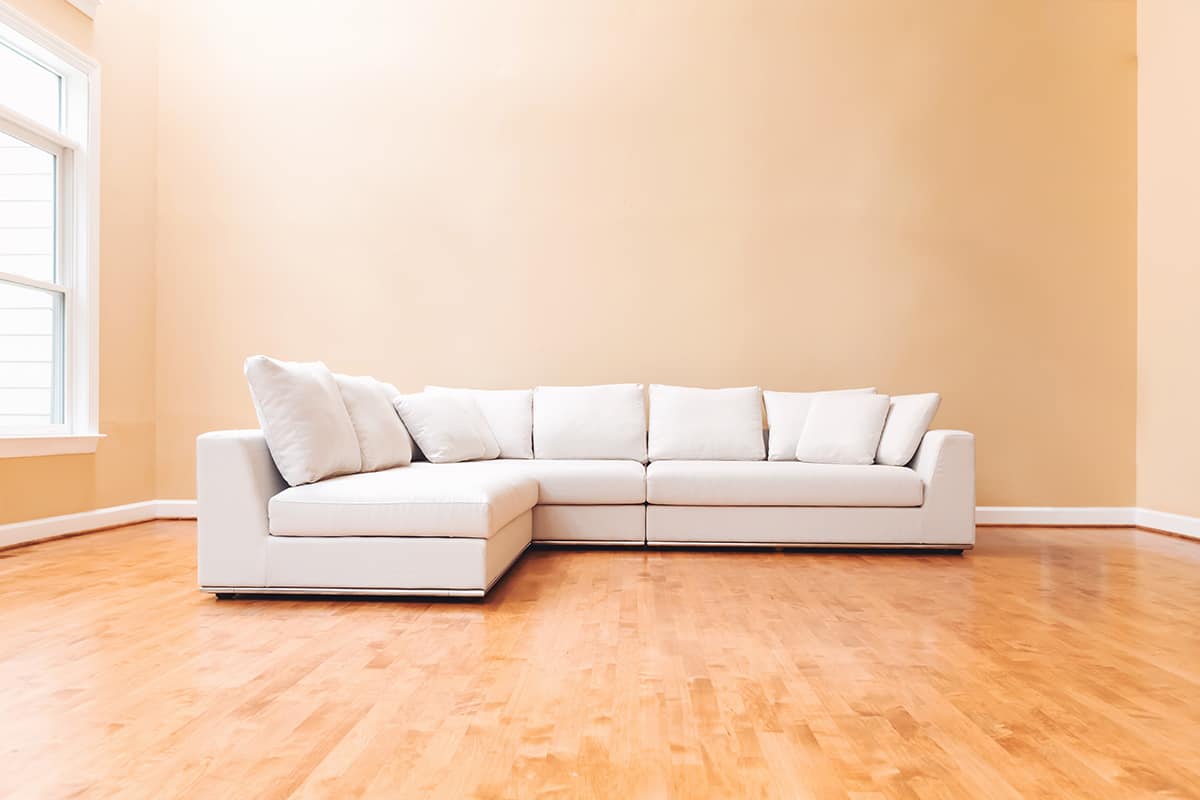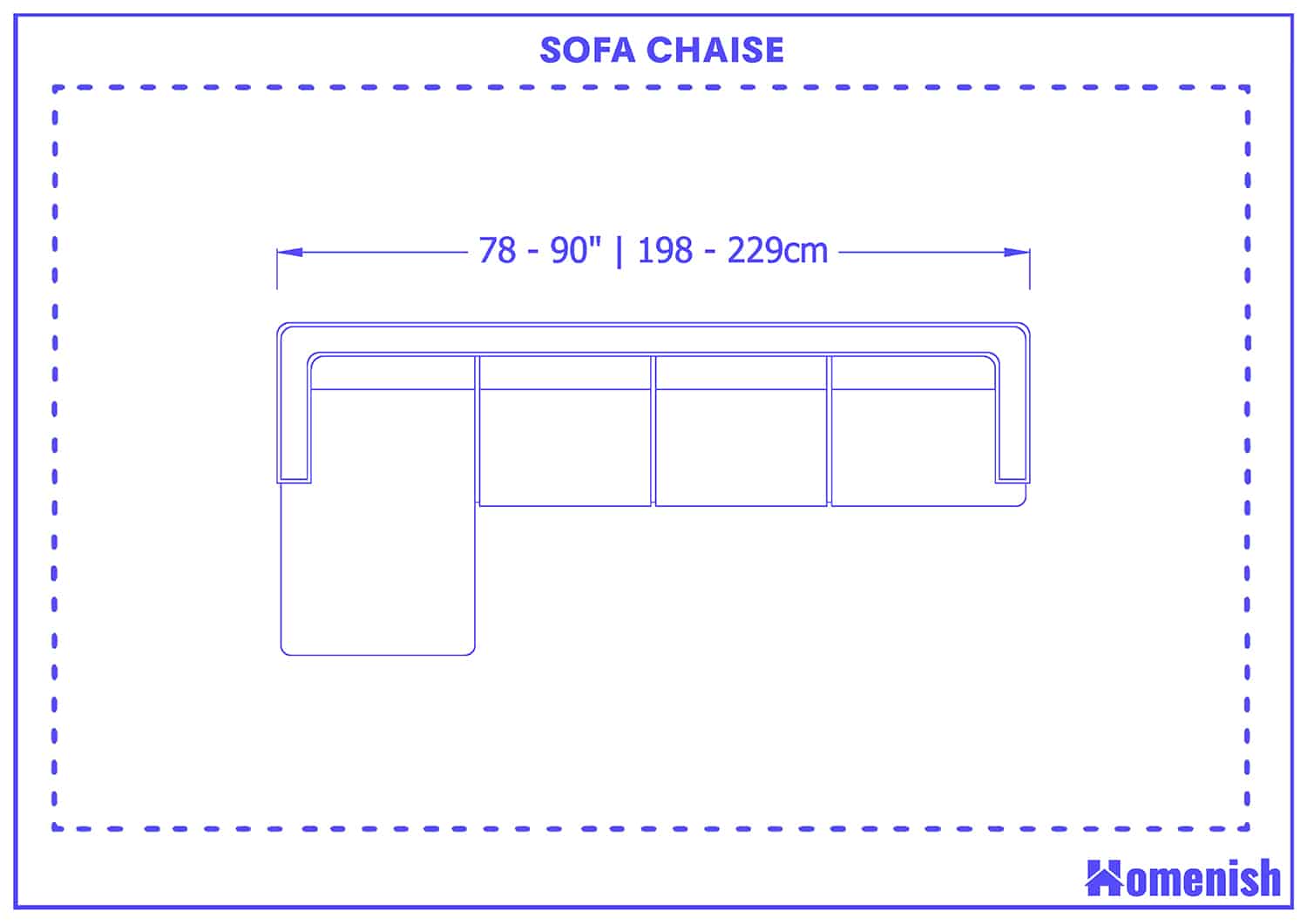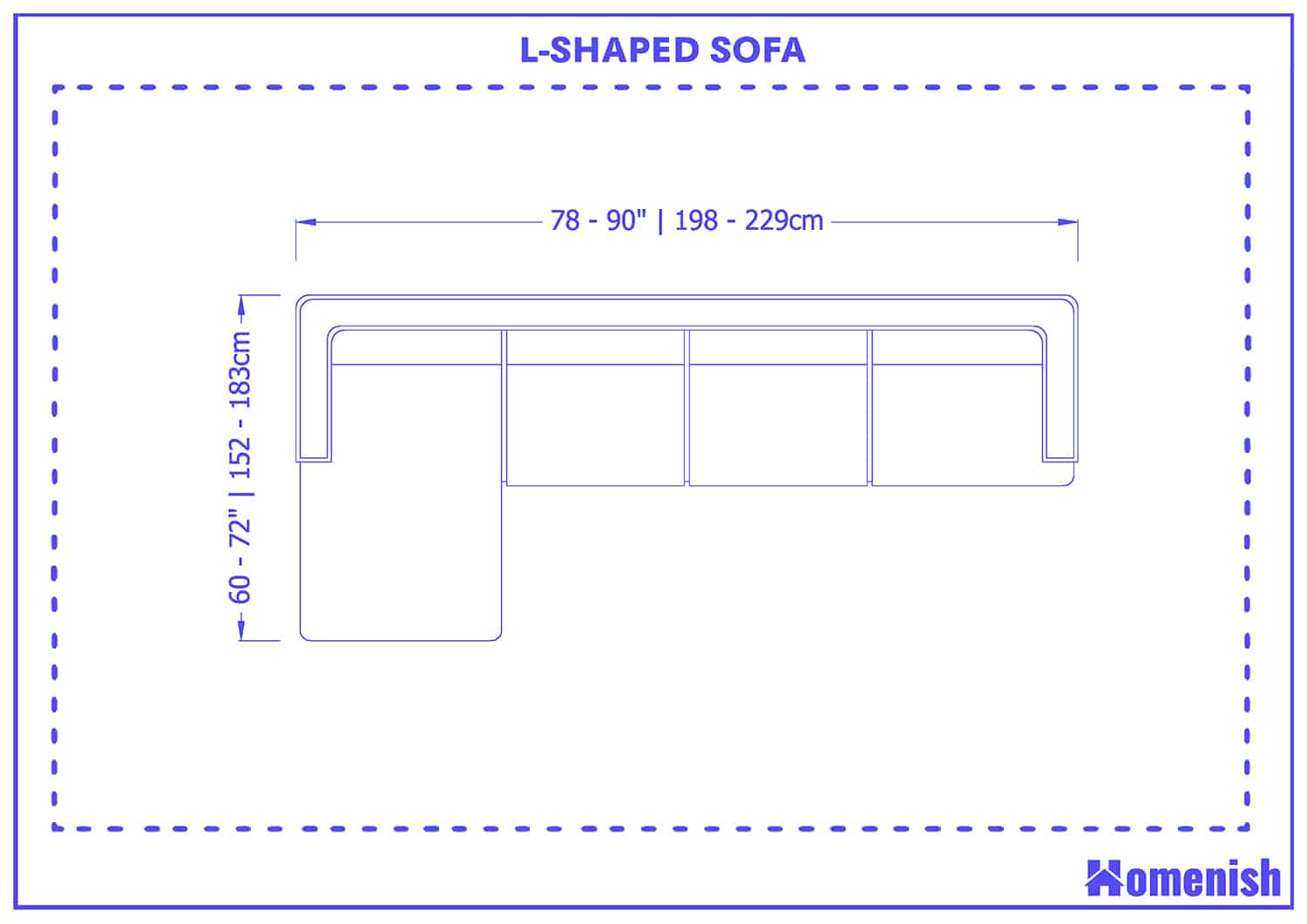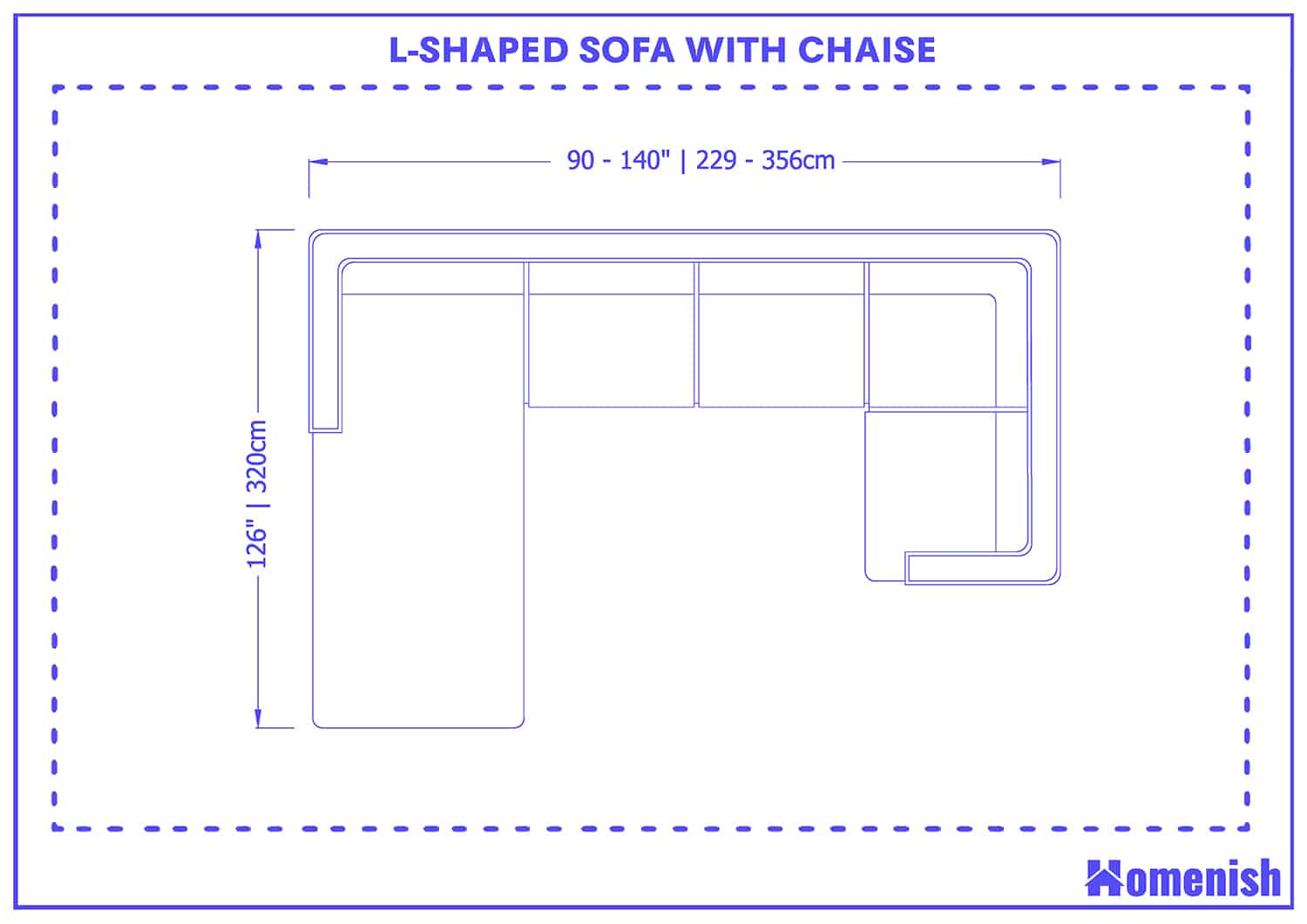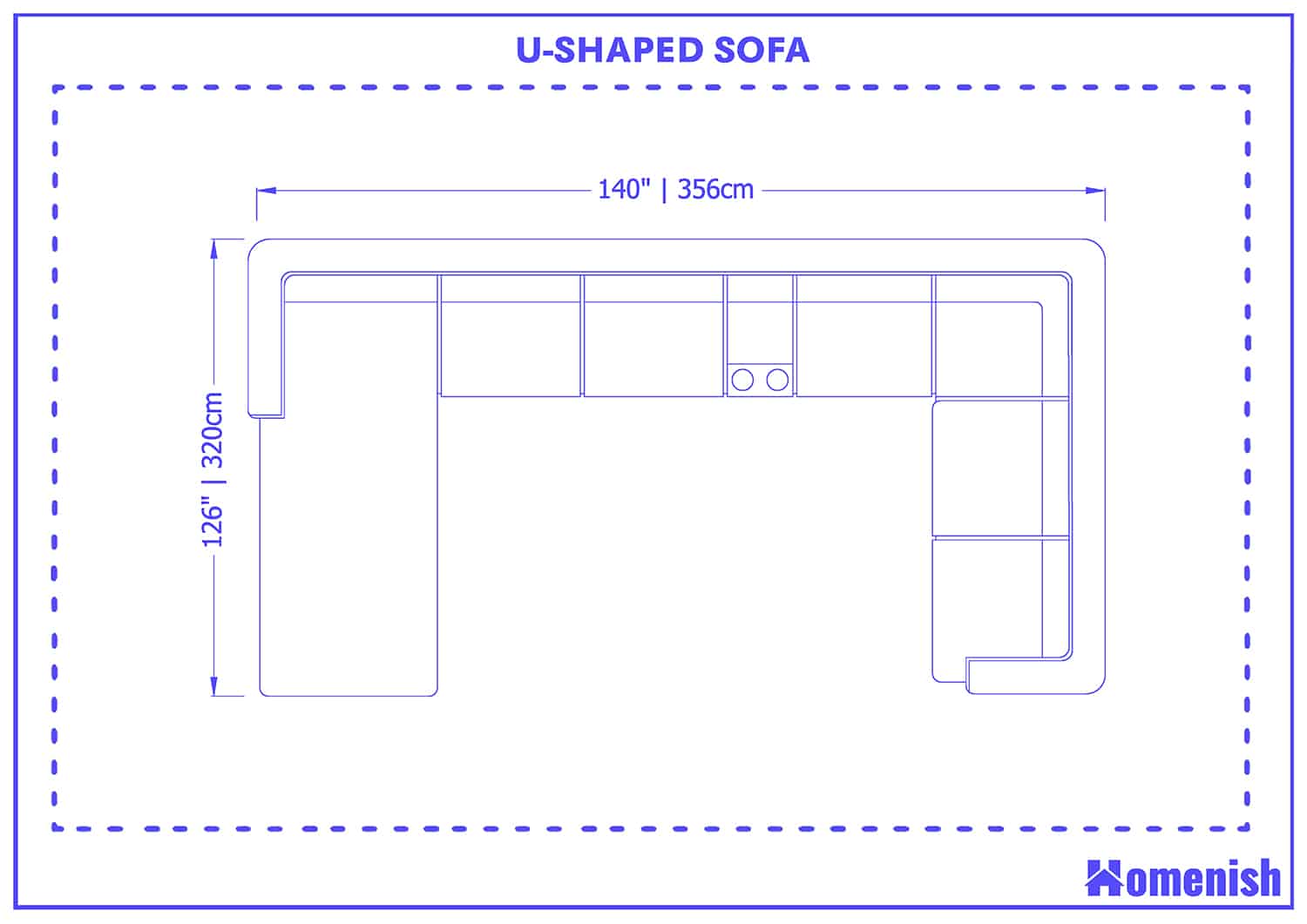Sectional sofas differ from traditional sofas in the way that their frames are constructed. A traditional two-seater or three-seater sofa will have one frame that holds the whole sofa together, and it cannot be taken down into small pieces.
A sectional sofa, however, has a frame made of sections, which can be constructed and deconstructed, and sometimes they can even be put together in different formations to suit different room shapes and configurations.
The fact that the frame of a sectional sofa is composed of different sections is how this type of sofa got its name.
Benefits of Sectional Sofas
Portability
One reason that people opt for sectional sofas over traditional sofas is the fact that sectional sofas are much more portable.
If you have ever moved house and had to take your sofa with you, you will probably have found that it can be quite tricky getting a full-sized sofa through doorways and maneuvering it around hallways and between rooms.
If you have an apartment that’s at the top of a flight of stairs, then moving a traditional sofa will be extremely difficult. ‘Pivot,’ anyone?! Sectional sofas can be deconstructed into separate pieces, which are a more manageable size if you want to move the sofa to a different room or move it to a different property entirely.
Style
Sectional sofas are a sought-after type of sofa that can give a high-end or luxury style to a room. They are widely available in all sorts of designs, sizes, colors, and materials, so you can be sure that you will find one that suits your taste and your existing home decor.
Comfort
Many people find that sectional sofas are more comfortable than regular sofas. If you sit in the corner of a sectional that has a chaise or is an L-shape, then you will have the ability to sit with your legs and feet up in front of you.
Sectionals also tend to offer more space than conventional sofas, which means people using them have more space to get comfortable and really lounge back.
Versatility
Some sectionals have the capacity to be configured in different ways. For example, a sofa chaise could have the chaise positioned on the left side or the right side.
This helps to make the sofa future-proof, so you can have peace of mind that it will work with the layout if you decide to rearrange your furniture or move to a different home.
Types and Sizes of Sectional Sofas
There are different types of sectional sofas that come in a wide range of sizes to suit different room layouts and room sizes.
Sofa chaise
A sofa chaise looks like a traditional sofa but with the addition of a chaise lounge fitted on one side. This means, on a three-seater sofa chaise, that the sofa will have three seats, but one of the end seats will be extra long, allowing the person sitting on it to have their legs at a height level to their hips.
This varies from an L-shaped sectional in that it still has one back and armrests at either end, rather than an L-shaped sofa which will have two backs set at a right angle.
Sofa chaise sectionals tend to be smaller than other types of sectionals, though they are available in larger sizes.
A standard sofa size with 2-3 seater is around 70-84 inches in length.
With a sofa chaise at one end, an average sectional sofa chaise can vary from around 78 inches to 90 inches, though examples can also be found in oversized varieties with widths of as much as 118 inches.
The fact that these sofas come in quite small sizes means they are great for people with small living rooms who still want to experience the benefits of a sectional sofa.
L-shaped sofa
The L-shaped sectional sofa is the most common type of sectional. It is shaped exactly like an ‘L,’ with one side which is longer than the other.
These sofas can have exactly the same footprint as a sofa chaise, but the difference is that an L-shaped sofa will have seats along either side, whereas, on a sofa chaise, the shorter side is intended to be used as a footrest.
These sofas look great in the corner of a room, and they also work well to create a nook for a coffee table. They come in similar sizes to sofa chaise sectionals, with an average width of 78 to 90 inches and a length of 60 to 72 inches.
These sofa types, just like other sectional sofas, have an arm height of 6 – 9 inches.
L-shaped sofa with chaise
This type of sectional is a mix of the L-shaped sofa and the sofa chaise styles. There are two possible configurations; one end of the sofa will have a chaise, and the other end will have an L-shape, or there could be a chaise at the end of the short length of the L-shaped sofa.
Either way, the resulting shape of the sofa will be a non-symmetrical horseshoe shape.
This sofa provides a lot of seating and is great for larger rooms. It will occupy a lot of floor space, so it isn’t ideal for smaller spaces because it will dominate the space and not leave a lot left over.
You can find this type of sofa in widths of 90 inches up to 140 inches, with a length as long as 126 inches.
U-shaped sofa
A U-shaped sectional sofa is less common because it takes up such a huge amount of space, which most homes don’t have.
This type of sectional offers the most seats of any sofa, typically with a minimum of 8 seat cushions.It takes on a U-shape, which looks like an L-shaped sofa with a mirror reflection.
These sofas will be symmetrical when sliced down the middle. In some instances, a U-shaped sofa will not have three walls of seats and instead will have a chaise at either end instead. These are generally the largest types of sectional sofas, with lengths of up to 140 inches and lengths of 126 inches along each end.
